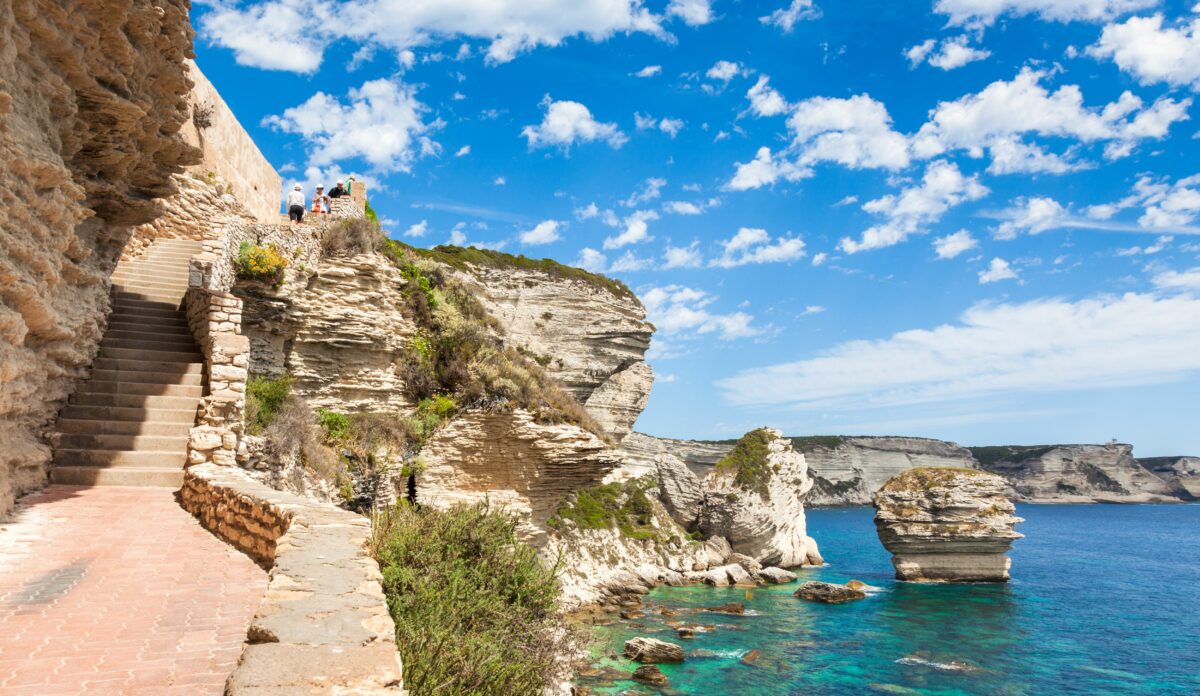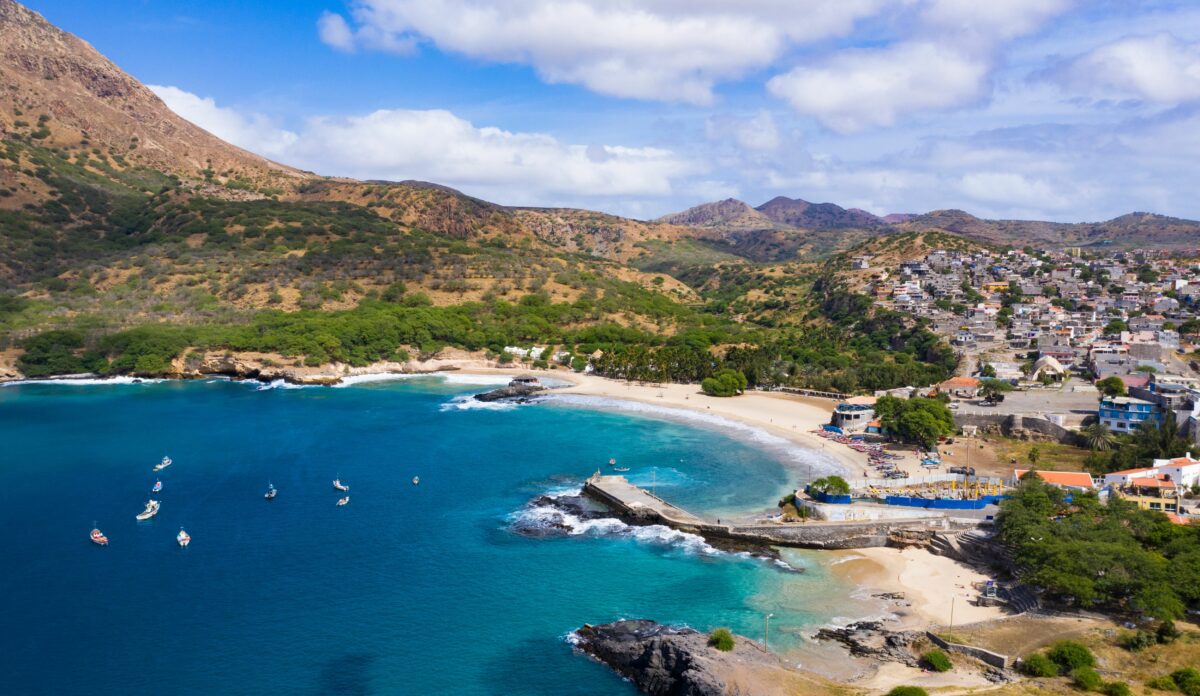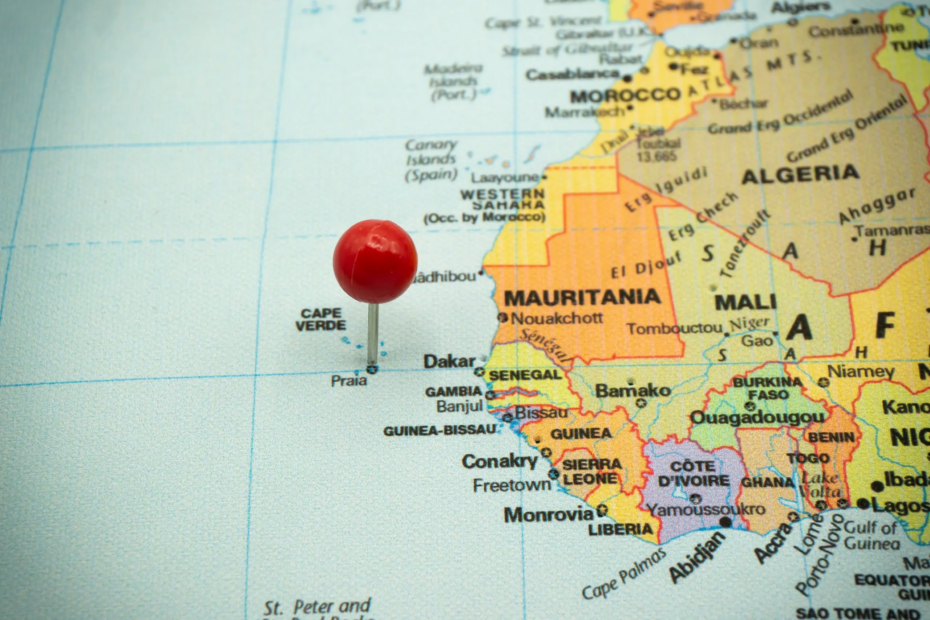Located in the heart of the Atlantic Ocean, Cape Verde is a captivating archipelago consisting of ten volcanic islands off the western coast of Africa. With its unique blend of African, European, and Brazilian influences, this island nation is a melting pot of cultures, offering visitors a captivating mix of landscapes, music, and history. Let’s uncover the wonders of Cape Verde.
Geography and Climate
Cape Verde’s geography is as diverse as its culture. The islands vary in terrain, with some flaunting rugged mountain ranges and others boasting sweeping sandy beaches lined with palm trees. The archipelago is volcanic in origin, giving the soil a rich, fertile quality that supports a variety of plant life. Despite its location in the tropics, Cape Verde’s climate is temperate, with temperatures ranging from 20 to 30 degrees Celsius year-round.

The islands experience a rainy season, known as ‘Tempo das Chuvas‘, from August to October. Still, the overall climate is arid, with some islands receiving less than 100mm of rainfall annually. The constant Atlantic breeze provides a refreshing counterbalance to the warm sun, making Cape Verde an idyllic destination all year round.
Cape Verde comprises ten volcanic islands scattered across the Atlantic Ocean. Additionally, Each island boasts distinctive features, from lush green valleys to dramatic mountain peaks. The archipelago’s location in the tropical zone ensures warm temperatures year-round, with refreshing coastal breezes that provide respite from the sun’s rays. Read Also: The Top 8 Smallest African Countries [With Pictures]
History
With a history deeply rooted in African and European influences, Cape Verde showcases a fascinating blend of cultures. The islands were uninhabited until the 15th century when Portuguese explorers discovered and claimed them. In the ensuing years, Cape Verde became a significant outpost in the Atlantic slave trade, with its strategic location making it a convenient stopover for ships.
The islands bore witness to an influx of African, European, and South American influences, which informed the unique cultural blend we see today. In the late 19th century, the abolition of the slave trade led to economic decline and emigration, a trend that persisted until the mid-20th century.
Cape Verde finally gained independence from Portugal in 1975, emerging as a politically stable nation with a growing economy. Today, Cape Verde is a testament to resilience and cultural fusion, its history echoing in its vibrant music, resilient people, and diverse landscapes.
With a history deeply rooted in African and European influences, Cape Verde showcases a fascinating blend of cultures. Discovered by Portuguese explorers in the 15th century, the islands became an essential hub in the transatlantic slave trade. Over the centuries, Cape Verdeans have shaped their identity, drawing from their African heritage and Portuguese colonial history.

Culture and Traditions
Cape Verde’s culture and traditions are a rich tapestry that reflects the archipelago’s diverse history. The islands are a melting pot of African, Portuguese, and Brazilian influences, resulting in a vibrant, unique culture. Traditional music forms the heartbeat of Cape Verdean life, with genres like Morna, Coladeira, and Funaná echoing through the streets. The nation’s most renowned musician, Cesária Évora, brought Morna to a global audience, her soulful voice encapsulating the island’s deep-rooted melancholy and hope.
Religion plays a significant role in Cape Verdean society, with most of the population practicing Roman Catholicism. This religious influence culminates in the vibrant annual festival of São João, where residents of different islands come together for feasts, processions, and traditional dancing. Another essential tradition is the Festa de Nossa Senhora da Luz, a religious celebration on the island of São Nicolau each August.
Finally, Cape Verdeans are known for their warm and welcoming nature. They have a strong sense of community, underpinned by the Creole concept of ‘morabeza‘ – a word used to describe the gentle, hospitable spirit of the Cape Verdean people. Read Also: Uncover Africa’s hidden treasures: Top 9 gems to visit
Food and Cuisine
The cuisine of Cape Verde is as diverse and vibrant as its culture, reflecting the influences of Africa, Portugal, and Brazil in its rich culinary flavors. Given the island’s abundant marine resources, a traditional Cape Verdean meal often revolves around seafood. Cachupa, a slow-cooked stew of corn, beans, and fish or meat, is recognized as the national dish, revealing a hearty and flavorful blend of the islands’ agricultural and seafood bounty.

Tuna is also a staple in the Cape Verdean diet, often served grilled or in a stew. For the more adventurous palate, ‘percebes‘ or goose barnacles, harvested from the rocky shoreline, offer a unique taste of the sea.
Moreover, Portuguese influence shines through in ‘pastel com diablo dentro,’ a spicy sausage enveloped in a cornmeal pastry, and ‘bolo de mel,’ a delicious honey cake. The vibrant fruits of Cape Verde, such as papaya, mango, and guava, make their way into refreshing juices and desserts.
Finally, no meal is complete without a shot of ‘grogue,’ a potent sugarcane liquor that is a favorite local tipple. Cape Verde’s food and drinks nourish and tell stories of the islands’ mixed heritage and resilient spirit.
Tourism Attractions
Cape Verde’s tourist attractions are as diverse and enthralling as its culture and cuisine. The islands are known for their stunning beaches, with Santa Maria Beach on Sal Island being a particular favorite for its azure waters and powdery white sands. Boa Vista offers the chance to witness nesting loggerhead turtles, a truly unforgettable experience for those interested in wildlife.
The island of Fogo, which means fire in Portuguese, is home to an active volcano, Pico do Fogo, that adventurous travelers can hike. The view from the top offers a breathtaking vista of a lunar-like landscape. Additionally, Cidade Velha, the old Portuguese capital, is a must-visit for history enthusiasts. It’s a UNESCO World Heritage site featuring cobbled streets and colonial buildings, recalling the islands’ past as a bustling trading post.
São Vicente, renowned for its vibrant music scene and nightlife, is the cultural heart of Cape Verde. Here, travelers can soak up the local ‘morna’ music, especially in the colorful city of Mindelo. Water sports enthusiasts will find plenty to keep them busy, with world-class windsurfing and kite surfing conditions, particularly on Sal and Boa Vista.

Economy
Cape Verde’s economy is service-oriented, with services accounting for over 70% of the country’s GDP and employing a significant portion of the population. The country strongly focuses on tourism, a key pillar of the economy and a major source of foreign exchange. Agriculture also plays a crucial role, particularly in rural areas, despite the country’s arid climate and lack of natural resources. Some of the main crops include bananas, corn, and beans.
Also, Remittances from Cape Verdeans living abroad significantly contribute to the economy. The country also benefits from foreign aid because it is a developing nation. Despite these contributions, Cape Verde faces economic challenges such as high unemployment rates and the need to diversify its economy.
The government has embarked on economic reforms to promote private sector development and attract foreign investment, focusing on sectors such as ICT, renewable energy, and maritime industries. These efforts and a stable political environment give the country potential for future economic growth.
Unusual Laws or Customs
Some unique customs and laws in Cape Verde reflect the island nation’s rich cultural tapestry. One of the most interesting customs is the ‘Catchupa‘ feast. This hearty stew, Cape Verde’s national dish, is traditionally cooked overnight and served for breakfast on special occasions. Friends, family, and neighbors often gather to share this meal, reflecting the strong sense of community on the islands.
As for laws, it might surprise some visitors that wearing camouflage or military attire in Cape Verde is illegal unless you are in the military. This law exists to prevent confusion between civilians and military personnel. Remember to pack accordingly if you plan a visit!
One interesting custom in Cape Verde is the “morabeza,” a term that embodies the warm and friendly nature of the locals. Greeting others with a smile and a handshake is customary, reflecting the country’s reputation for hospitality.



